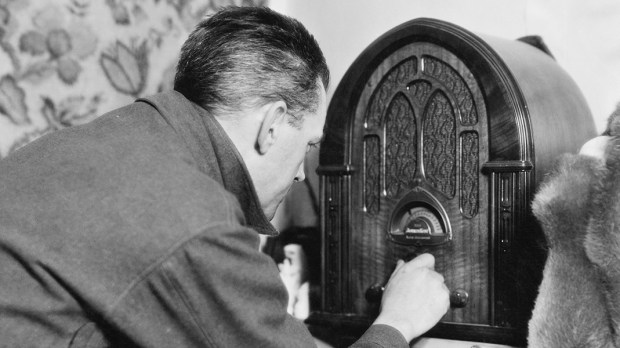“Fake news” is a concept that has circulated in American politics for the past several years, but the use of propaganda is as old as the history of international relations, perhaps. It was certainly a tool used by the National Socialists of Germany as Hitler took over parts of Europe between 1939 and 1945.
Now, 75 years after the end of World War II, a scholar is detailing the ways the Nazis’ “fake news” was countered — agressively, he says — by another news outlet on the European Continent: Vatican Radio.
“The reach of Vatican Radio … was huge,” said Nathan Morley, author of Radio Hitler: Nazi Airwaves in the Second World War, which is due out in August. “It beamed daily newscasts, which followed the war with painful attention, alongside a ‘discourse’ discussion program in English beamed to India, North America, Europe, Asia, Africa and the Middle East. In early 1940, an account on Vatican Radio about the ‘horror and inexcusable excesses’ inflicted on Poles under Nazi rule obviously irked [Joseph Goebbels, Hitler’s propaganda minister] and other leading Nazis.”
“The following year, Vatican Radio was critical of the measures taken by the Nazi authorities aiming to suppress Catholicism in Alsace Lorraine and other parts of Occupied France,” Morley continued, in an interview with Crux. “Unsurprisingly, the station came under electronic attack by jamming. … [When] the jamming was so bad, Vatican Radio had to change frequency.”
The Nazis broadcast propaganda to Europe, the British Isles, the Middle East and even the United States, Morley said. And they often feigned devotion to Christian faith in order to appeal to foreigners’ religious sensibilities.
“In typical twisted form, the Nazis pretended to support the Church on their overseas radio services, especially after [the Battle of] Stalingrad, said Morely, a Cyprus-based journalist and author. “An attempt to win the support of American communities was made by playing on their religious sentiments. A service devoted to Ireland — called the Gaelic program — saw Professor Muhlhausen, who occupied the Chair of Celtic Studies at the Berlin University, often waxing lyrical on ‘Nazi devoutness to the Christian faith’ and the partiality of Nazi leaders for the Catholic Church.”
The author said that Goebbels deployed an American journalist named Jane Anderson to appeal to Catholics in the United States. Anderson used the slogan, “Always remember progressive Americans eat Kellogg’s Corn Flakes and listen to both sides of the story.”
“She compared the invasion of Russia in 1941 to a religious crusade backed by 50 million members of the Catholic Church of Germany — which, of course, had been persecuted and bullied by Hitler since 1933,” Morley said. “She said Catholics stood united and as one against Russia. ‘The Catholic Church in Germany will support the Führer by word and deed in the crusade against the Communist enemies of the Christian world.’”
The Nazis also set up fake radio stations, one of which, purporting to be broadcasting from inside the British Isles, was called the Christian Peace Station and came across as an apostle for peace.
“On one occasion it accused every female working in the armaments industry as committing a crime against God,” Morley said. “Transmissions usually wrapped up with hymns and a prayer.”
But apparently none of this was a match for Vatican Radio, and Goebbels disliked it so much that he demanded almost daily transcripts of its broadcasts.
“He never really understood how an independent radio station could beam from what he viewed as the capital of Germany’s greatest ally,” Mussolini’s Fascist regime, Morley told Crux. “For him, the whole Vatican Radio operation was totally perplexing.”
Vatican Radio was officially inaugurated on February, 12, 1931, with Pope Pius XI delivering the first ever radio message by a pope.
That was two years and a day after the birth of Vatican City State on February 11, 1929, following the signing of the Lateran Pacts between the Holy See and the Kingdom of Italy, Vatican News pointed out. “Just four days after the creation of Vatican City, Pope Pius XI officially commissioned the Italian-born radio pioneer Guglielmo Marconi to build the radio station inside the new state,” Vatican News said. “The first signal that was sent out from Vatican Radio on Feb. 12, 1931, was however in Morse code.”
The Vatican anticipated the need for a way to speak directly to Catholics and others of good will living under regimes such as National Socialism.
“To talk freely across borders in an age when totalitarianism was spreading — there was Bolshevism in the East, there was Nazism on the horizon, there was fascism and so on,” former Vatican spokesman Fr. Federico Lombardi told
in 2011. “Being able to speak freely with people around the world, in particular, also in churches that were experiencing difficulty or being persecuted, was absolutely vital.”Rome Reports said that during World War II, Vatican Radio delivered 250,000 messages to prisoners of war from their families.

